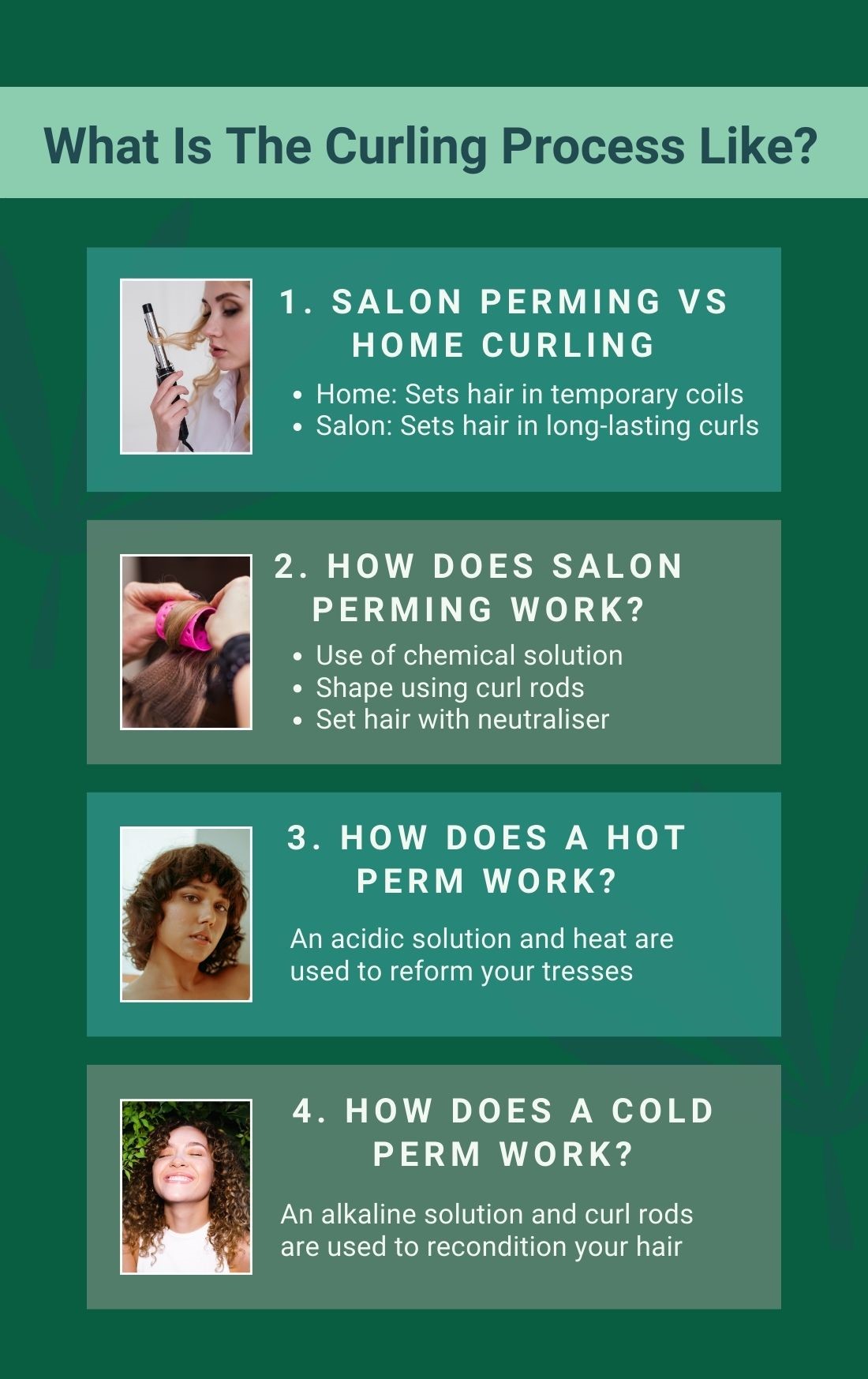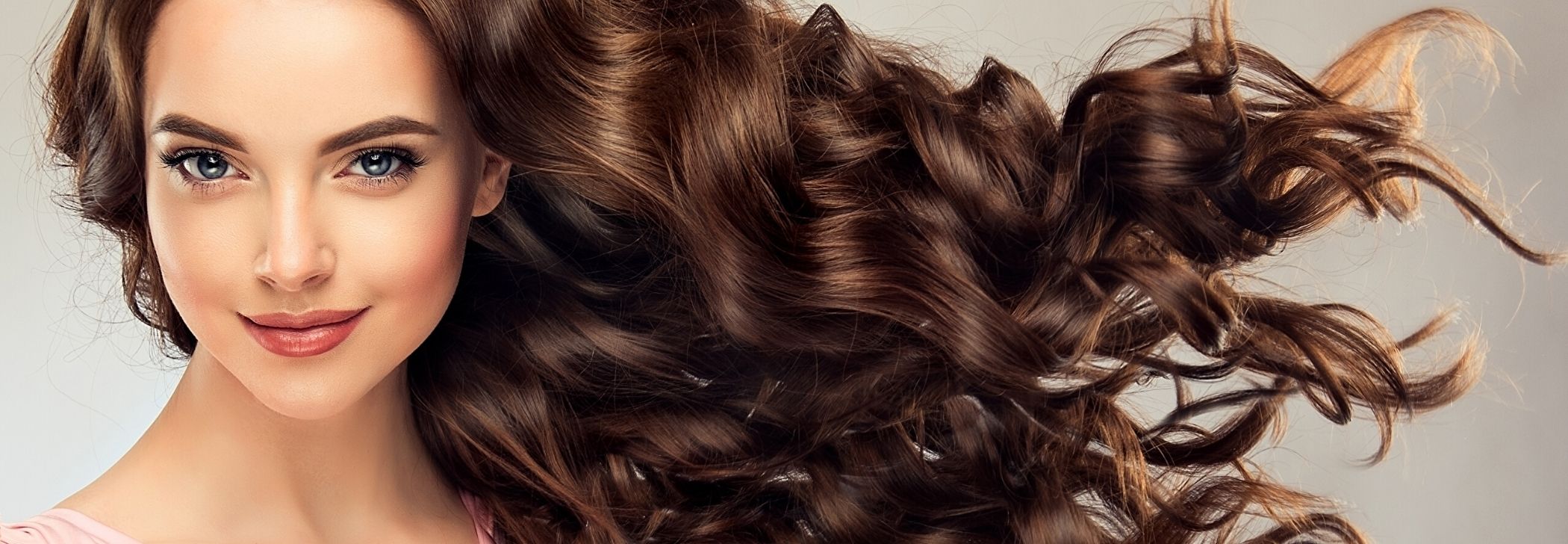
Hot vs Cold Perm: What is the Difference?
There are many reasons why people choose to perm their hair. For individuals struggling with limp or flat locks, this technique helps to uplift tresses to create more volume and body. For those with some natural wave or coil, this treatment is a way to enhance, shape and maintain that texture. Others may simply want to change things up in terms of the way they look.
A perm, short for permanent, refers to the styling treatment that allows you to set your naturally straight locks into curls. This is done by chemically breaking and rebuilding the keratin bonds into the desired curl pattern. Depending on the type, the treatment applies a chemical solution, sometimes in combination with heat, to enact this curling process.
Before you head to the salon for your appointment, familiarise yourself with the two broad categories of curling techniques – hot perm and cold wave perm. Most, if not all, of the latest hairstyles fall under these categories. They are different in several ways. Understanding these distinctions will help you choose which approach is more well-suited for your tresses. Read on for the full comparison between these two types.
Perming Treatments
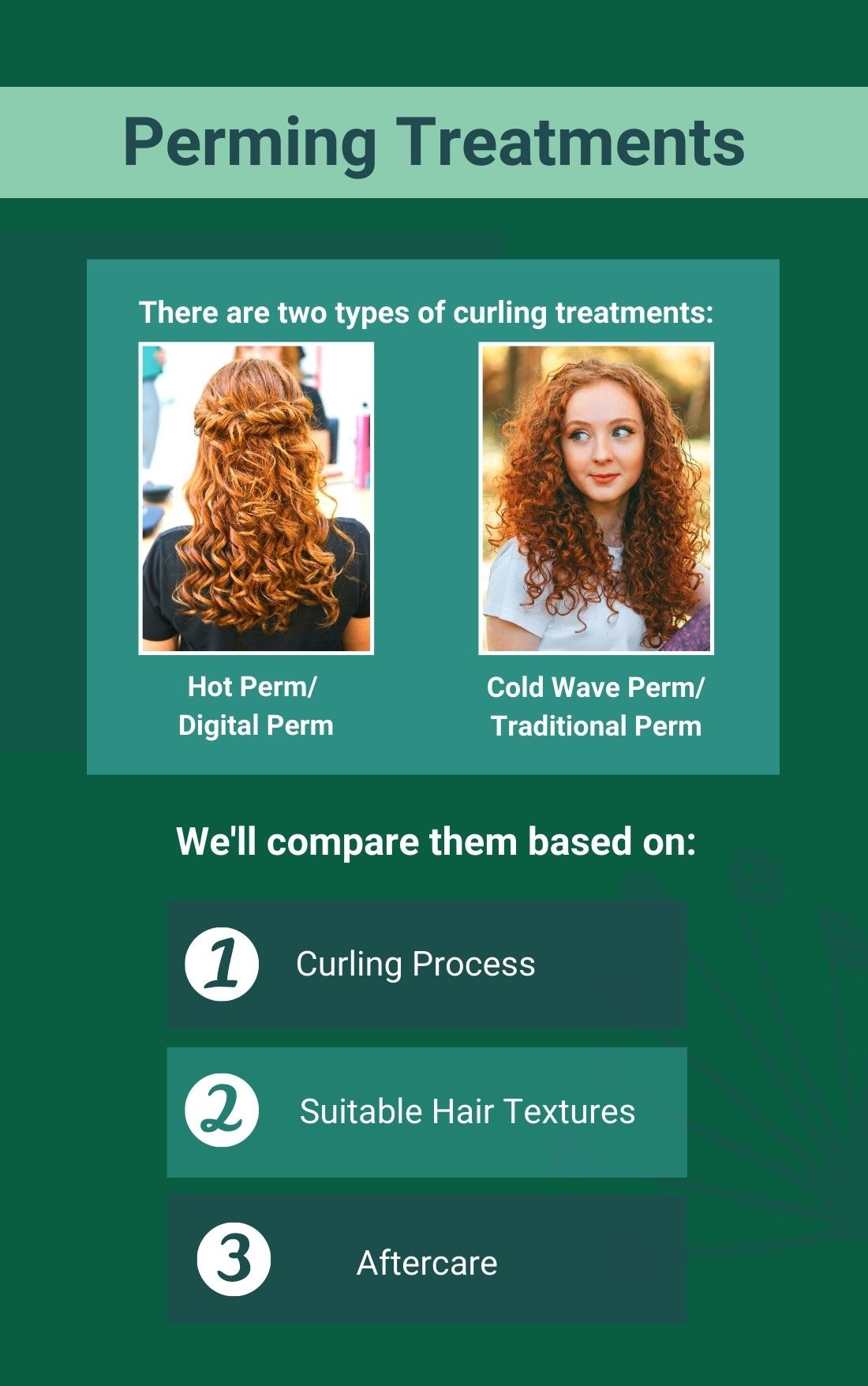
Let’s first take a general look at curling treatments:
1. Two Types of Treatments
When it comes to this curling technique, a cursory search on the internet may boggle your mind. There are so many wavy hairstyles that you can opt for at your favourite beauty salon: Korean S Curl, Japanese Perm, Classic Perm, and the list goes on. Stylists and experts are always developing the latest hair trends to suit changing tastes and preferences. But the important thing to keep in mind when choosing the wave pattern is that all these styles fall under either category:
- Hot perm, also known as the digital perm
- Cold wave perm, sometimes referred to as the traditional or classic perm
2. Comparisons Between Hot and Cold Curling Treatments
We can examine the differences between the thermal reconditioning treatment and the cold wave treatment based on these four questions:
- What is the curling process like?
- Which hair textures and types are best suited for each treatment?
- What is the final look?
- What is the level of aftercare required?
What Is The Curling Process Like?
1. Salon Perming vs Home Curling
To understand perming, let’s first compare it to our usual home curling solutions. When you use a curling iron, this only sets your hair in temporary coils. These waves do not last long and are susceptible to sweat, humidity and your next shower. On the other hand, when you recondition your hair at the salon, the texture of your tresses is altered in a way that cannot be reversed by humidity. Your hairstylist is actually breaking down and re-forming the chemical bonds in your hair, also known as disulphide bonds or keratin proteins. The result is curly tresses that are long-lasting.
2. How Does Salon Perming Work?
Depending on the treatment category you opt for, each will have their own variations to produce different wave patterns. Generally, though, the perming process generally has three steps to create this long-lasting wave pattern:
- Breaking the disulphide bonds with the appropriate chemical solution
- Moulding the wave shape with rods and end papers
- Setting the reshaped cuticle bonds in place with a neutraliser
3. How Does A Hot Perm Work?
The hot perming process uses an acidic solution and heat to reform your tresses. First, an acidic solution with a pH between 4.5 to 7 is applied. This begins to break down the disulphide bonds. Now, the cuticle is able to be remoulded into the desired shape around heated rods. These heated rods are digitally controlled, which is why sometimes the process is more commonly known as the digital perm. The heat is what helps set the protein structures into the intended shape. After which, the stylist brings the pH of your cuticles back to normal with the application of a neutraliser solution. This re-bonds the proteins and sets the wave pattern in place. Your stylist may also moisturise the cuticles before setting it for better absorption while the cuticle shafts are still open. Depending on the volume and length of your tresses, it can take three to four hours for the entire process.
4. How Does A Cold Perm Work?
Invented in the 30s, the cold technique is more traditional in its processes. Unlike the former, there is no thermal application in this reconditioning technique. Instead, a cold perm is an alkaline-based process, in which a waving solution containing ammonium thioglycolate is applied to your locks. As an alkaline solution, it has a pH between 8.2 and 9.6. This chemical works to break apart the disulphide bonds and alter the protein structure. The hair is then coiled around the curl rods to create the spiral structure. To end off, the neutraliser is applied to rebalance the pH and lock the proteins in its new style. Your tresses are then taken out of the rods after five minutes and rinsed thoroughly with cool water. Since it does not rely on heat, the processing time for an alkaline reconditioning treatment tends to take a longer time than the thermal reconditioning process.
Which Hair Texture Is Best-Suited For Hot or Cold Treatment?
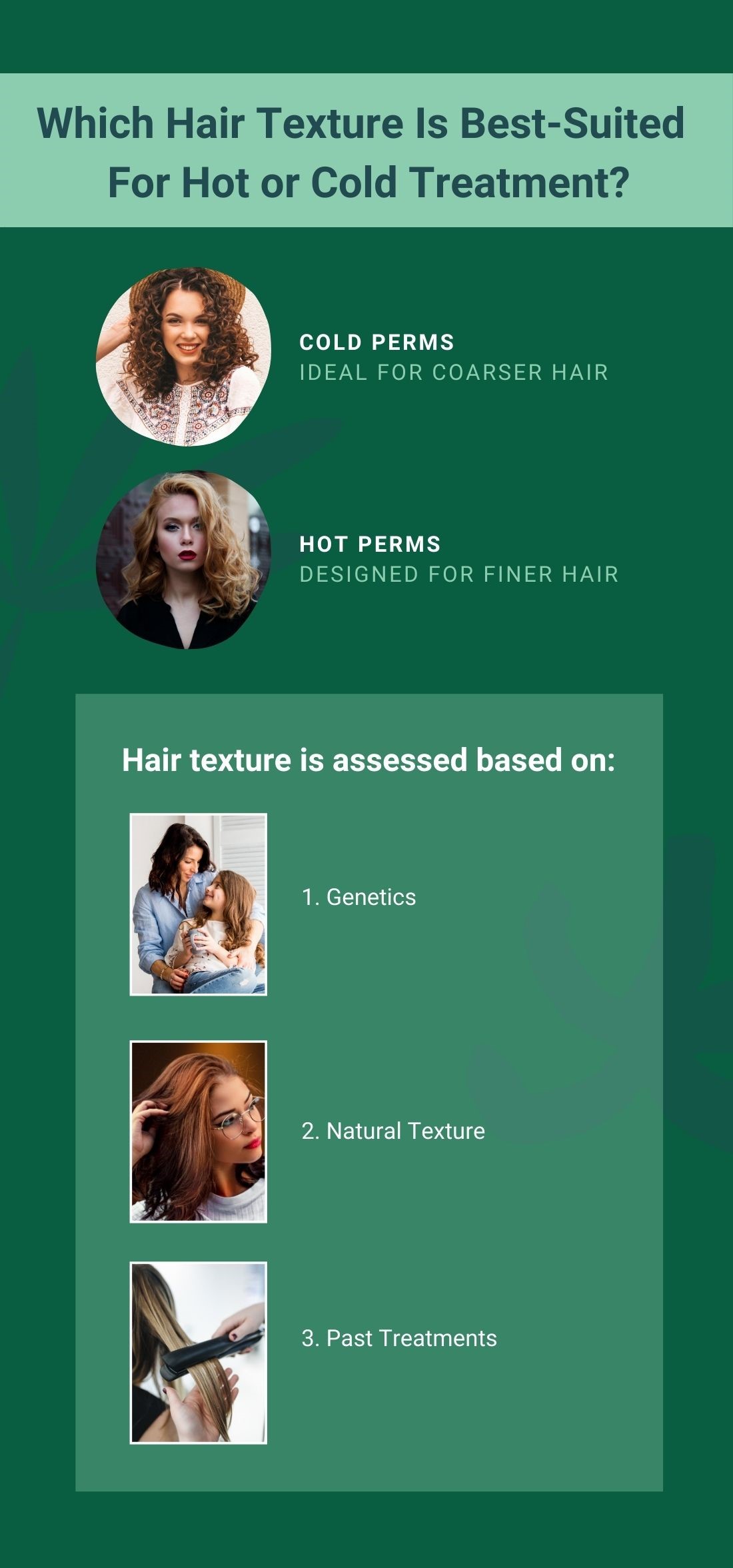
As previously explained, each process works differently. Therefore, like most people, you will find that one of these techniques is more well-suited for the condition of your tresses. The professional stylist will examine the condition of your locks based on a combination of factors:
- Natural texture
- Hair type based on genetics
- Past bleaching, colouring or styling treatments
By understanding the texture, type and strength of your locks, you can better determine which curling process is the right one for you. This gives your coils a greater chance to properly form and retain its shape.
1. Hot Perms: Designed for Finer Hair
This technique comes highly recommended for individuals with finer, extremely delicate strands. In fact, Asians tend to have thinner hair, making us the perfect candidates for the heat-based process. Moreover, if you have previously undergone bleaching, colouring or styling treatments, this means that your tresses have already been through some damage. This would mean that your locks are not as strong as before. Thus, opting for the heating treatment would protect better than the alkaline technique.
2. Cold Perms: Ideal for Coarser Hair
On the other hand, the cold treatment is suitable for those with stronger and coarser hair. This would refer to hair types other than Asian. If your strands are greater in thickness, the alkaline solution will work better on this hair condition. In addition, if your tresses have not been colour-treated or bleached prior, it may be able to withstand this technique. However, do note that the chemicals used in an alkaline solution can lead to a more fragile and fractured condition.
What Is The Final Look?
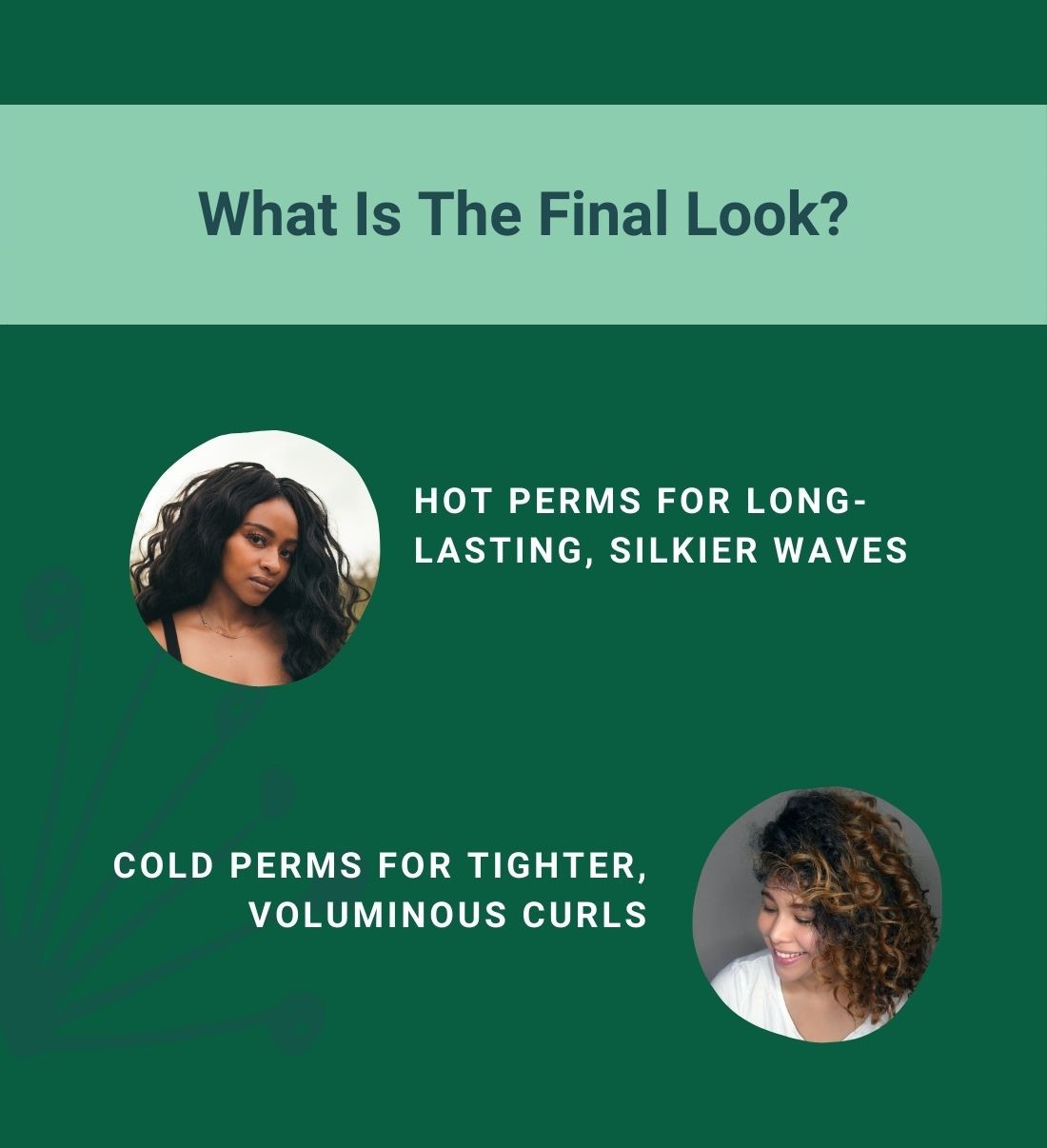
One big point of comparison between the two categories is the style of wave pattern that is produced. After the heating treatment, you will more likely walk away from your session with longer-lasting curls, compared to the alkaline perming process.
1. Hot Perms for Long-lasting, Silkier Waves
If you are looking for a salon session that will give you silkier curls, go for the heating technique. Your tresses will feel and look significantly smoother and softer. This is due to the fact that the solutions and process closely follow that of a straightening technique. As a result of the technique, the waves are more defined when your locks are dry. When it is wet, the waves are looser and not as prominent. However, do note that waves can only start a few inches after your roots, to protect your scalp from heat burns.
2. Cold Perms for Tighter, Voluminous Curls
The cold technique is appropriate for those seeking tighter and more defined coils. Your tresses will also take on a moist appearance. It is definitely a more dramatic coil style as they are able to start close to the roots without risking burns. The behaviour of the waves is also reversed. For coils created with the alkaline treatment, they are more obvious when wet and loose when your tresses are dry.
What Is The Level of Aftercare Required?
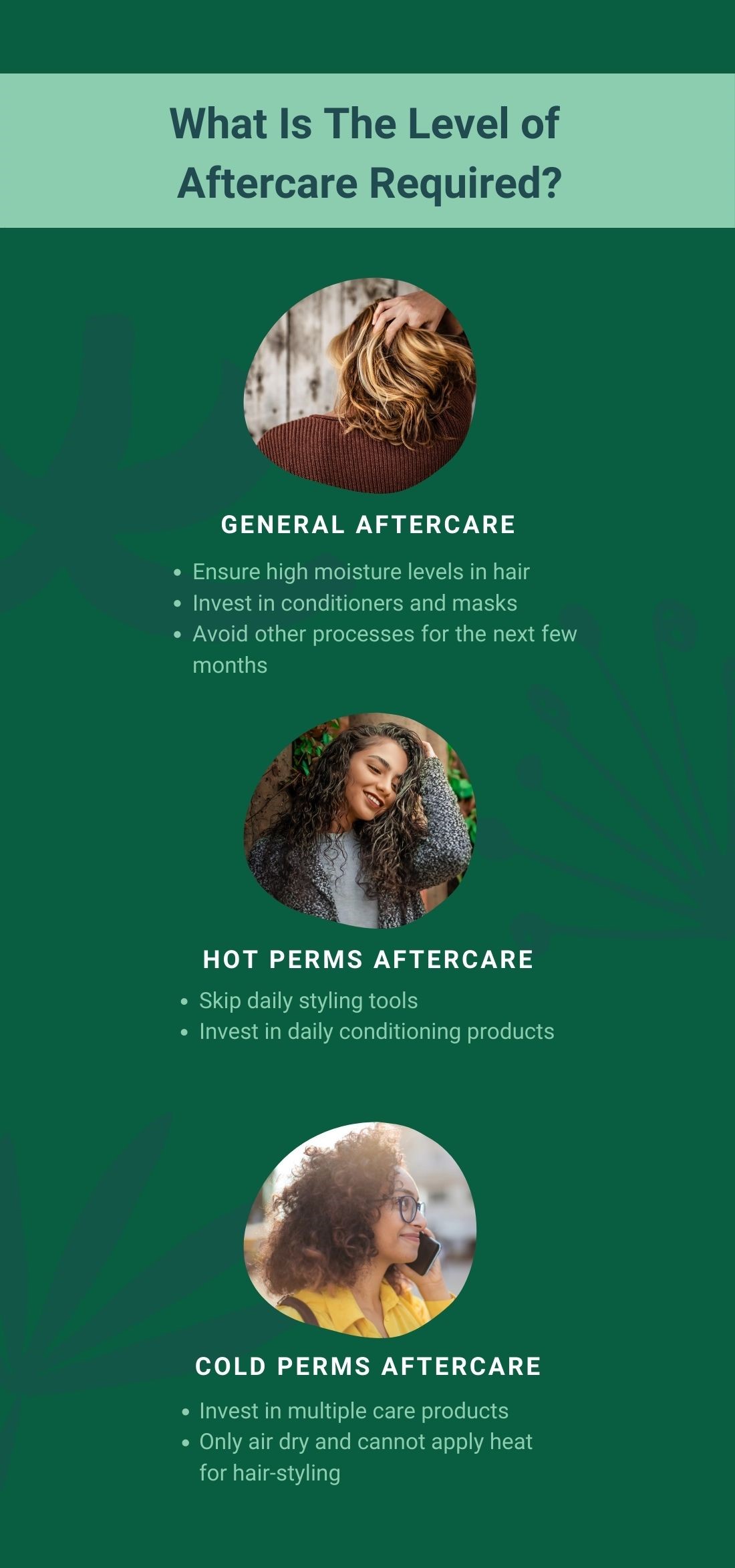
For any kind of curling treatment, the aftercare is as important as the process itself. Let’s take a look at how to keep your new curls looking fresh.
1. General Aftercare Tips
Your curls will stand a better chance at staying as luscious and as wavy if you ensure their high moisture levels. Neglecting to nourish your locks will cause them to dry out and become more frizzy than defined. Hence, do invest in conditioners and masks for your wavy locks. However, do stay away from creamy lotions that may weigh the locks down and make it harder to retain its pattern. You should also give your hair time to heal and grow stronger after the salon session. Hence, you are recommended to avoid other processes for the next few months. Heat styling at home should be avoided as far as possible, in order to reduce damage to the cuticle. If you must, the temperature must be kept lower to prevent shocking your cuticles and drying out the moisture from your locks.
2. Hot Perms Need Less Aftercare
For those of you with a packed schedule, the thermal reconditioning process is the way to go. This technique tends to require less style and maintenance to create the same level of wave pattern as the alkaline reconditioning process. At home, you will need to invest in daily conditioning habits with products suited for wavy locks.
3. Cold Perms Need More Aftercare
The defined and dramatic curls produced by the alkaline technique look great, but require greater levels of aftercare. Hence, you may need to spend more time on your beauty routine. The tighter coils will require daily conditioning to maintain its shape. You should be ready to invest in after-treatment serums, conditioning lotions, and sulphate-free shampoos. Moreover, you are advised to only air dry and not apply heat to style and shape your waves.
The Final Word
There is no doubt that hair perming is a great way to freshen up your look. Knowing which salon hair treatment to opt for may not be the most straightforward decision as there are numerous choices available on the market. Doing extensive research on the different types of perms can also be confusing. Moreover, there is also the fear that you may cause more damage to your locks in the process of beautifying it.
It is, therefore, wise to seek out specialist help in this matter. In particular, the delicate and finer condition of Asian tresses tends to require professional treatments. This ensures that your cuticles are safeguarded from excess damage while still achieving the desired curling results. Not only will they be able to assess your hair’s health and condition, a professional stylist can also determine the best wave technique for your tresses. With their wealth of experience in the curling technique and chemical solution application, you will be in safe hands.



